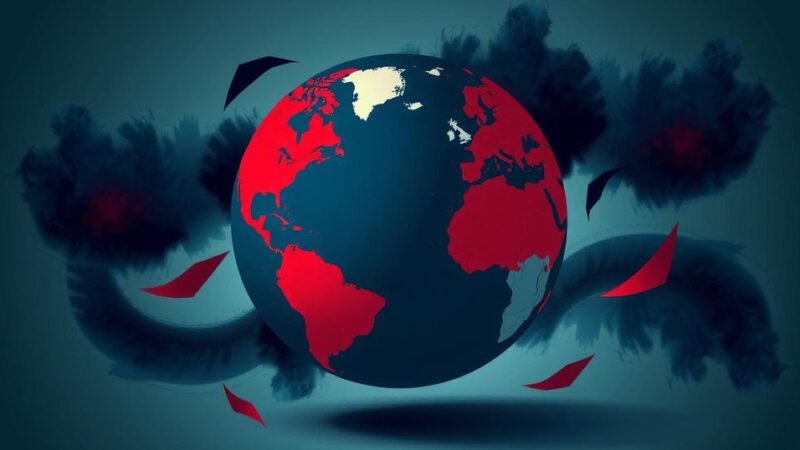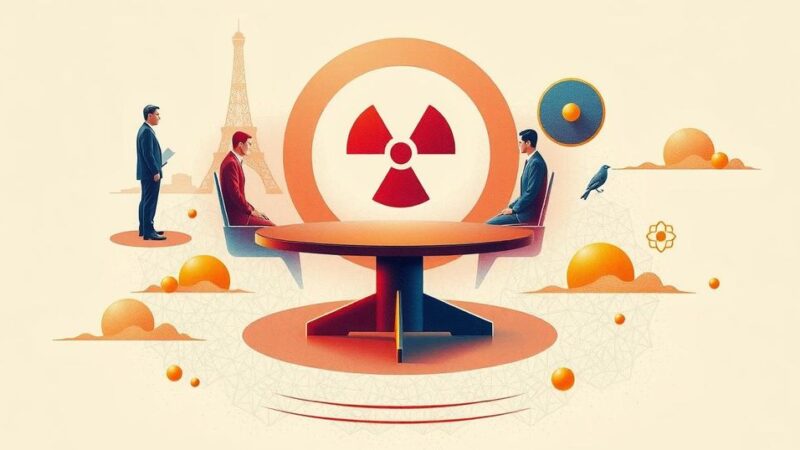Southeast Asian leaders met in Laos to discuss the Myanmar civil crisis and South China Sea disputes at the annual ASEAN summit. The gathering saw new leaders in attendance and included dialogues with global powers. As Myanmar’s violence escalated following a military coup, the summit also focused on territorial claims by ASEAN members against China in the South China Sea. Expectations for substantial outcomes remain low, given national interests that often overshadow regional cooperation.
Southeast Asian leaders convened in Laos on Wednesday for their annual regional summit, where they aimed to confront the ongoing civil strife in Myanmar and territorial disputes in the South China Sea. This year’s gathering under the Association of Southeast Asian Nations (ASEAN) is noteworthy not only for the pressing issues at hand but also due to the attendance of several new national leaders. Leaders from ten ASEAN member states—Indonesia, Thailand, Singapore, Philippines, Vietnam, Malaysia, Myanmar, Cambodia, Brunei, and Laos—will engage in comprehensive discussions with influential global powers, including China, the United States, and Russia, all vying for greater influence within the region. The summit’s timing suggests that additional discussions may also touch upon escalating violence in the Middle East, despite Southeast Asia predominantly experiencing only indirect consequences from such conflicts. The assembly will also feature conversations with other regional dialogue partners, such as Japan, South Korea, India, and Australia, encompassing various topics from economic collaboration to climate change and energy policy. A notable highlight is that this assembly marks the first summit for several newly appointed leaders, including Thailand’s Paetongtarn Shinawatra, who at 38 is the youngest leader in the bloc, and Singapore’s Prime Minister Lawrence Wong, who recently succeeded Lee Hsien Loong. The ongoing crisis in Myanmar remains a focal point of discussion. President Paetongtarn Shinawatra referred to it as an “extremely important issue.” Following the military’s ousting of Aung San Suu Kyi’s government in February 2021, the situation has escalated into a humanitarian crisis marked by increased violence and unrest, resulting in nearly 6,000 casualties. Although Myanmar’s military government has agreed to an ASEAN peace plan that includes ceasefire and mediation, clashes with pro-democracy guerrillas and ethnic militants continue. Myanmar is expected to be represented by its Foreign Ministry permanent secretary Aung Kyaw Moe, marking the country’s first high-profile representation at these meetings in three years. Discussions are also anticipated to center around the complex maritime disputes in the South China Sea, vital for global trade, where several ASEAN member states have overlapping territorial claims with China. Recent confrontations, particularly involving the Philippines and China, have raised concerns regarding China’s assertive behaviour in the region, with notable incidents including the use of water cannons against Filipino naval personnel attempting to access a contested atoll. Despite previous agreements aimed at reducing tensions, conflicts and accusations persist. It is worth noting that while these discussions will be forward-looking, expectations for concrete outcomes are limited. Analysts suggest that countries may prioritize their national interests over regional stability, particularly in regards to relations with China.
The gathering in Laos represents a crucial opportunity for ASEAN leaders to address pressing regional crises, specifically the civil unrest in Myanmar resulting from a military coup, and the strategic challenges posed by maritime territorial disputes in the South China Sea. These issues have both humanitarian and geopolitical ramifications, influencing regional dynamics and the balance of power among Southeast Asian nations. The situation in Myanmar continues to deteriorate while Southeast Asia grapples with varying degrees of influence and interests concerning China, a significant player in the region.
The summit in Laos signifies ASEAN’s efforts to confront critical issues, with Myanmar’s internal conflict and maritime disputes in the South China Sea at the forefront. While the presence of new national leaders heralds a shift in leadership perspectives, the complexity of these issues, combined with competing national interests, raises questions about the potential for substantial progress. The outcomes of this summit will be closely watched as ASEAN continues to navigate a path through these multifaceted challenges.
Original Source: www.independent.co.uk






